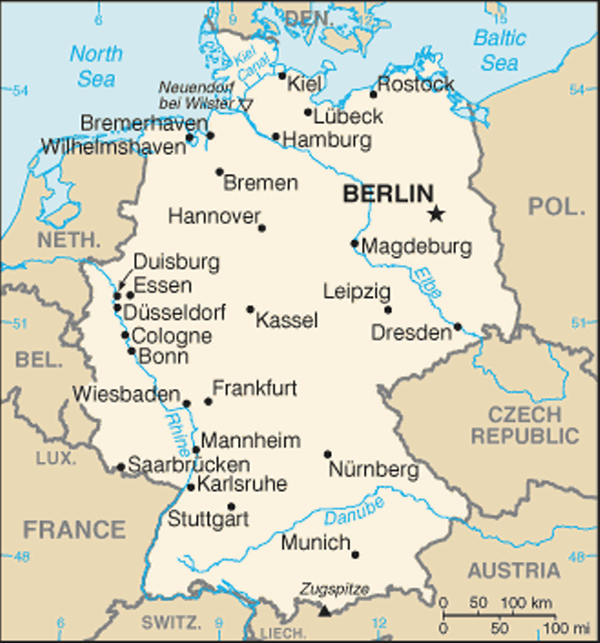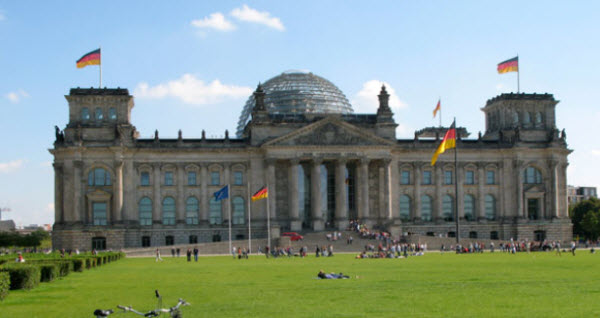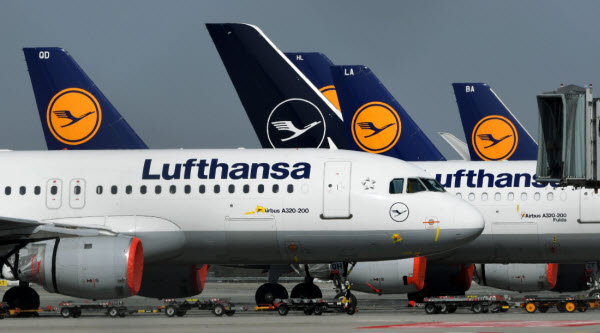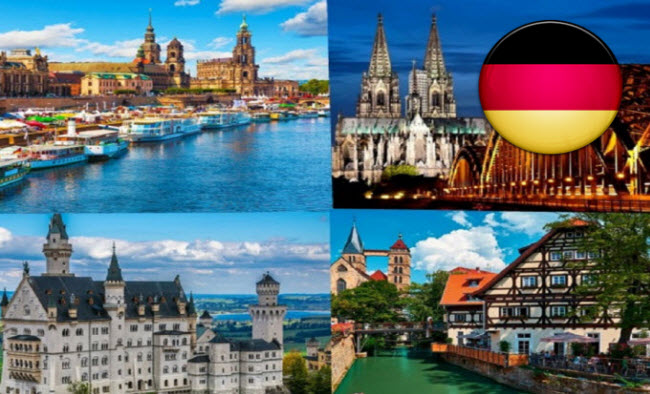Germany, officially known as the Federal Republic of Germany, is a country located in Central Europe with a rich history and significant influence in global affairs. It is known for its strong economy, cultural heritage, and role in European and international politics.
Geography

- Location: Central Europe, bordered by Denmark, Poland, the Czech Republic, Austria, Switzerland, France, Luxembourg, and Belgium.
- Coordinates: Approximately 51.1657° N, 10.4515° E.
- Area: Approximately 357,022 square kilometers.
- Borders:
- Germany shares land borders with Denmark (68 km), Poland (467 km), the Czech Republic (646 km), Austria (801 km), Switzerland (334 km), France (451 km), Luxembourg (73 km), and Belgium (167 km).
- Climate:
- Temperate seasonal climate, with moderate to heavy rainfall throughout the year. It experiences cold winters and mild to warm summers.
- Terrain:
- Varied, including lowlands in the north, highlands in the central region, and mountainous areas such as the Alps in the south.
- Elevation:
- The lowest point is the Neuendorf-Sachsenbande (3.54 m), and the highest point is the Zugspitze (2,962 m).
- Natural Resources:
- Coal, lignite, natural gas, iron ore, copper, and timber. Germany is also a significant producer of renewable energy.
- Land Use:
- Arable land: approximately 33%, permanent crops: 1%, other: 66%.
- Population Distribution:
- The population is distributed across urban and rural areas, with major urban centers including Berlin, Hamburg, Munich, and Frankfurt.
Population and Society

- Population: Approximately 84 million (estimate for 2024).
- Ethnic Groups:
- Predominantly ethnic Germans, with significant communities of Turkish, Polish, Russian, and other immigrant groups.
- Languages:
- The official language is German. Regional languages such as Sorbian, Low German, and Frisian are also spoken.
- Religions:
- Predominantly Christian (mainly Protestant and Roman Catholic), with significant Muslim and Jewish communities.
- Age Structure:
- Germany has an aging population with a high proportion of elderly and a low birth rate.
- Population Growth Rate:
- Approximately 0.2% per year.
Country

- Country Name: Federal Republic of Germany
- Common Name: Germany
- Origin of Name: Derived from the Latin name “Germania,” which was used by the Romans to describe the region inhabited by various Germanic tribes.
- Type of Government: Federal parliamentary republic.
- Capital: Berlin
- Origin of Capital Name: The name “Berlin” is of uncertain origin, but it is believed to have Slavic roots.
- Local Time: Central European Time (CET) (UTC+1); Central European Summer Time (CEST) (UTC+2) during daylight saving time.
- Daylight Saving Time: Observed from the last Sunday in March to the last Sunday in October.
- Administrative Divisions: 16 federal states (Bundesländer).
- Dependent Areas: Includes several overseas territories, such as the German overseas territories.
- Independence: Unified in 1990 after the end of the Cold War; prior to that, it was divided into East and West Germany since 1949.
- Citizenship Acquisition: By birth, descent, or naturalization.
- Legal System: Civil law system based on the Basic Law (Grundgesetz) and influenced by the Napoleonic Code.
- Executive Branch: The Federal President is the head of state, and the Federal Chancellor is the head of government.
- Legislative Branch: Bicameral Parliament consisting of the Bundestag and the Bundesrat.
- Judicial Branch: The Federal Constitutional Court is the highest court in Germany.
- Political Parties: Includes major parties such as the Christian Democratic Union (CDU), the Social Democratic Party (SPD), the Green Party, the Free Democratic Party (FDP), and the Alternative for Germany (AfD).
- Flag Description: Three horizontal stripes of black, red, and gold.
- Country Code: DEU
Economy
- GDP: Approximately 4.5 trillion USD.
- Agricultural and Animal Products: Wheat, barley, potatoes, sugar beets, dairy products, pork, beef, poultry.
- Industries: Automotive, machinery, chemicals, electronics, engineering, pharmaceuticals, and renewable energy.
- Budget: Balanced with occasional surpluses and deficits.
- Exports: Machinery, vehicles, chemicals, electronics, pharmaceuticals, and industrial products.
- Imports: Machinery, vehicles, oil, chemicals, and electronic equipment.
- Foreign Reserves: Approximately 200 billion USD.
- External Debt: Approximately 2 trillion USD.
- Local Currency: Euro (EUR).
Communications
- Fixed Lines: Approximately 40 million lines.
- Mobile Lines: Approximately 90 million lines.
- Country Code: +49
- Broadcast Media: ARD, ZDF, and numerous private broadcasters.
- Internet Code: .de
- Internet Users: Approximately 80 million people.
Transport

- National Air Transport System: Extensive network with major international airports.
- Airports: More than 40 airports.
- Heliports: Numerous, mainly in urban and industrial areas.
- Pipelines: Extensive network for oil, gas, and chemicals.
- Railways: Extensive network with high-speed trains (ICE) and regional lines.
- Road Network: Includes autobahns and major roads totaling approximately 650,000 kilometers.
- Ports: Major ports include Hamburg, Bremen, and Bremerhaven.
Military

- Military Composition: Includes the German Army (Bundeswehr), German Navy, German Air Force, and various support and specialized units.
- Military Expenditures: Approximately 50 billion USD per year.
- Personnel in Military and Security Services: Approximately 180,000 active members.
- Military Equipment: Includes advanced fighter jets, submarines, tanks, and missile systems.
- Military Service Age: 18 years for voluntary military service.
